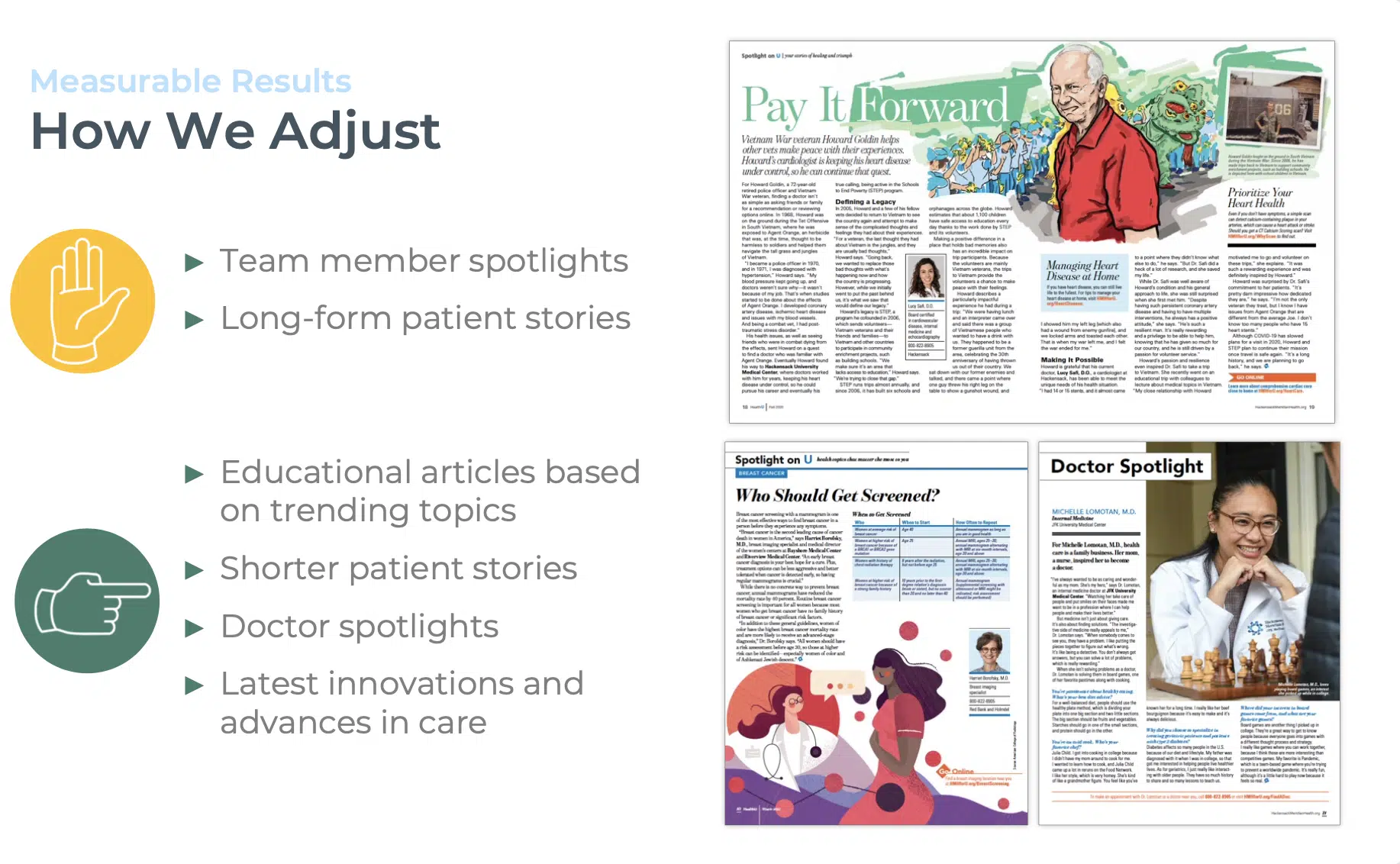Are Patient Stories Worth the Investment?

It’s true that patient stories can deliver an emotional hook for hospitals and healthcare organizations and help humanize healthcare brands. But before you flood your blog, magazine or social channels with this type of content, take a pause to make sure you’re delivering them in the most effective way and that you have a plan for testing and adjusting as you go.
Consider these lessons learned from our experiences with healthcare organizations.
Think Beyond Standard, Text-based Patient Stories
Sure, text-based patient stories can be well received and have a place in your content strategy. But if you’re putting all of your eggs in that basket, you’re missing out. When you have a patient story to tell, consider how you can deliver it for different channels. For example:
- Use beautiful professional photography in print
- Share patient experiences through brief text and personal photos for Facebook
- Capture patient testimonials through short videos for Instagram, Facebook and other channels
- Let the patient tell their own story through an Instagram Story takeover
Consider the Patient Web Search Journey
Patient stories largely address consumers with a transactional or commercial intent — those individuals who may have been diagnosed with a condition and are searching for options to take action, such as scheduling an appointment or procedure. If your blog or content hub is heavily focused on these pieces, you may be missing out on the many consumers who take to search with an educational intent.
Instead, complement patient stories with content that answers healthcare-related questions that are commonly searched such as:
- “How do I prep for my first mammogram?”
- “Are gel manicures safe?”
- “How do I know if my thumb is broken or bruised?”
Check out how New Jersey-based Hackensack Meridian Health pivoted their patient story strategy in their community magazine below.
Make a Patient Story Prioritization Plan
When you have a limited budget or small team — or channels like print where real estate is a hot commodity — create a prioritization plan for the patient stories you pursue. For example:
- Stories that showcase an innovative procedure or treatment that no one else can provide (or at least none of your competitors)
- Stories that are relevant to a broad consumer base (breast cancer screening stories, heart health stories, weight-loss surgery stories, etc.)
- Stories with a “knock your socks off” angle or highly compelling details (a baby that was delivered by one of your doctors mid-flight, a retired pediatrician whose knees were replaced by her former patient, etc.)
- Stories featuring recognizable patients (maybe it’s the local TV news anchor, a sports figure or your city’s former mayor, for instance)
Test Before You Continue to Invest
Like any content you create, it’s important to regularly measure and adjust your patient story plan. For example:
- Did your recent reader survey show you that readers are less interested in reading patient stories? Test out emphasizing educational content and using patient stories more sparingly.
- Is your Facebook audience scrolling past your patient story professional photos? Test out using patient-provided, non-professional ones.
- Do text-based patient stories on your blog have the least views and engagement? Test out patient videos on this channel.
Ready to Make Your Patient Stories Work Harder for You?
Fill out the form below to download our guide, How to Make Your Content Work Harder for You — Not the Other Way Around, and learn how to develop a comprehensive content strategy to maximize the impact of your patient stories.


